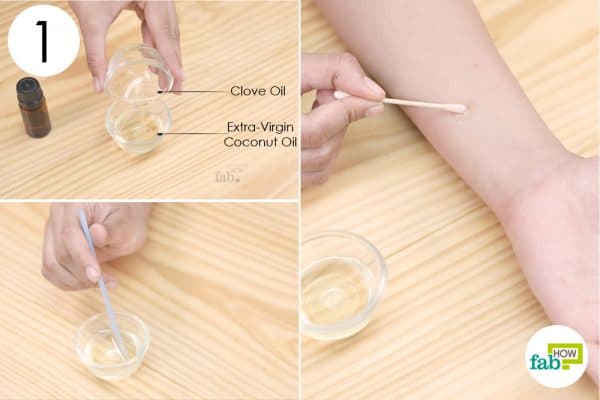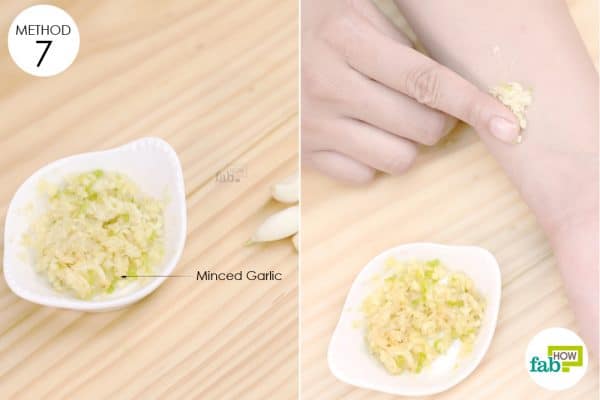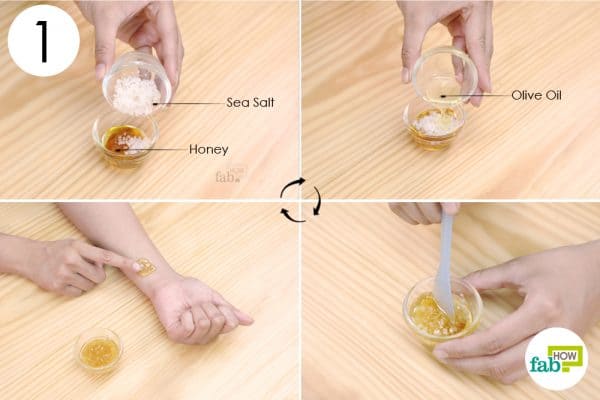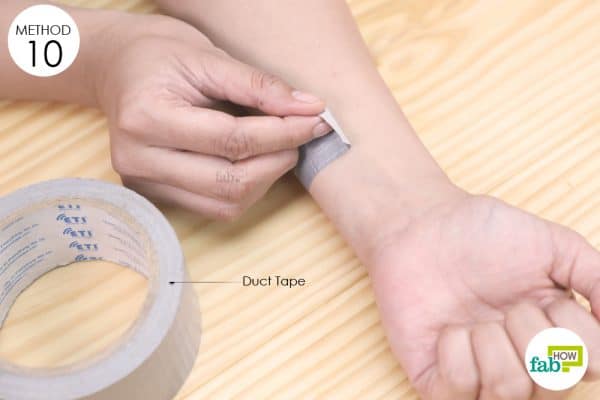Molluscum contagiosum, also called water warts, is a viral infection of the skin caused by a pox virus which is contagious. This infection causes the skin to produce harmless, raised bumps that have a dimple in the center. These lesions or bumps may be itchy and sore but not painful.
This condition is benign and not cancerous. There is no single treatment for molluscum and can sometimes take multiple treatments. If left untreated, a healthy immune system can help clear these areas. Sometimes new lesions will form while existing ones are being destroyed. Treatment should be started once the lesions start to appear.

Molluscum may be red and sore when the body tries to reject the virus. Sometimes a rash can even appear around the growth. These symptoms are harmless, but gentle soaps are recommended to be used if suffering from this contition. These characteristic lesions consist of either a single or cluster of dome-shaped, pink and waxy blisters that are 2 to 5 mm in diameter. They can spread to 1.5 cm in diameter in the case of giant molluscus.
Molluscum contagiosum is contagious and occurs worldwide, but it’s very common in developing nations, especially the tropics. It primarily affects children and young adults, and most commonly males. It is frequent in children between the ages of 1 and 10.
The lesions usually appear between 2 and 7 weeks after exposure to the virus. In some individuals, it may take up to 6 months to show up.
The period of the time the lesions remain on the skin varies from person to person and can be anywhere from 2 months to 4 years. People with a weaker immune system may require frequent treatment, as the skin lesions may be more pervasive and recurring.
Sexually active adults can contract the virus, but its more common in children because their immune system is still developing.
These lesions usually go away within 6 to 12 months in healthy individuals. However, the bumps can reappear. New lesions can form as this virus can self-implant, infecting the skin again. Scratching the lesions or undergoing removal procedures can scar that area of the skin.
This condition is usually diagnosed by a health care provider, depending on the characteristic appearance of the lesions. However, larger lesions may have several clumps of molluscum bodies, unlike the more common lesions that are depressed in the center or have the dimple.
Contents
- Causes of Molluscum Contagiosum
- Symptoms of Molluscum Contagiosum
- Preventive Measures
- Method 1: Apple Cider Vinegar
- Method 2: Tea Tree Oil
- Method 3: Grapefruit Seed Extract
- Method 4: Clove Oil
- Method 5: Oregano Oil
- Method 6: Coconut Oil
- Method 7: Garlic
- Method 8: Sea Salt or Epsom Salt
- Method 9: Iodine
- Method 10: Duct Tape
- Tips to manage molluscum contagiosum
Causes of Molluscum Contagiosum
As the name contagiosum suggests, this is a contagious virus.
- The virus can be transmitted by coming in contact with an infected person.
- It spreads among children by coming in contact with an infected child, usually while playing. It is important to keep areas covered as much as possible and to try to keep children from scratching these areas.
- In adults, this infection is most commonly spread through sexual contact.
- If a person touches a lesion and then touches any other part of the body, the infection can spread through autoinoculation or self-implanting.
- The transmission can also occur by coming into direct contact with objects that have been used by an infected person, such as gym equipment, toys, towels, washcloths, etc.
- People with a weak immune system caused by HIV/AIDS, cancer, chemotherapy and steroid medications are more prone to these lesions.
Symptoms of Molluscum Contagiosum
- The condition causes skin lesions that are raised, dome-shaped and umbilicated in the center, looking like a waxy material that can be squeezed out easily.
- They are generally painless but can be itchy and sore.
- The smaller lesion size varies between 2 to 5 mm in diameter, whereas larger lesions can go up to 1.5 cm in diameter.
- They can become red and inflamed.
- They are easily removed by scratching or rubbing, but this can result in scarring of the skin and spreading the virus to the adjacent skin.
- The most common places for the molluscum lesions to appear are the face, neck, arms, top of the hands and armpits in young children. If it is sexually transmitted, they can appear on the inner thighs, abdomen, and genitals.
- They usually appear in fewer than 20 in number, but the appearance of several hundred is possible.
- There are usually no symptoms of nausea, fever or weakness that generally appear in various other infections.
Preventive Measures
In order to prevent contracting the virus, maintaining good hygiene is the first step.
- Wash your hands frequently.
- Avoid any kind of sexual contact if you are infected with molluscum contagiosum. Do not have sex unless your infection is treated and the lesions have completely disappeared.
- Use clean towels, clothing, combs and other personal items. Set them aside just for yourself and do not share them. Avoid borrowing other people’s personal items as well.
- Try not to touch the bumps if you have been infected. This will limit the spread of the lesions.
- Cover the lesions using bandages or duct tape to help prevent spreading the virus to other people. Uncover the lesions only when no one is around, as your skin needs to breathe as well.
Method 1: Apple Cider Vinegar
Apple cider vinegar has been rumored to be used since 400 BC for a variety of purposes like eliminating bad breath, cleansing your hair and even as a facial toner. The acidity of apple cider vinegar makes it the perfect solution for treating molluscum lesions.
Use an organic and raw apple cider vinegar, which has 5% acidity. Every individual reacts differently to apple cider vinegar, and it can cause more pain, irritation, swelling and redness than the other remedies. This is also what makes it more effective in getting rid of molluscum contagiosum quickly & naturally.
To know if the apple cider vinegar is working for you, observe the center of the bump. If it turns black, then the virus is dead in that one lesion. The bump will dry up and fall off eventually.
This remedy is safe for both adults and children. You can also make some at your home.
Single-Step Treatment: Apply apple cider vinegar directly on the lesions

- Dip a cotton swab or cotton ball in apple cider vinegar and dab it on the bumps.
- If you’re using a cotton ball, you can place it on top of the lesion and secure it with a bandage or medical tape.
- Leave it on for 8 to 16 hours, then reapply the apple cider vinegar.
Use this remedy until the bumps recede.
Method 2: Tea Tree Oil
Tea tree oil has natural antiseptic, antiviral and antifungal properties. It acts as an astringent, which can also reduce the infection. Furthermore, tea tree oil reduces the inflammation and itchiness caused by the lesions and soothes the skin. In addition, it prevents scarring once the lesions have fallen off.
The coconut oil also has antibacterial properties, which will further prevent the virus from spreading.
This remedy can be used for both adults and children.
Things you’ll need:

- Tea tree oil – 15 to 20 drops
- Extra-virgin coconut oil – 1 tablespoon
Single-Step Treatment: Apply a blend of tea tree and coconut oil on the lesions

- Pour 1 tablespoon of extra-virgin coconut oil into a bowl and add 15 to 20 drops of tea tree oil to it. Mix well.
- Use a cotton swab to apply the blend on the bumps.
- Leave it on for 20 minutes.
- Rinse it off with lukewarm water and pat the area dry with a clean towel.
Use this remedy for several weeks to get rid of the bumps.
Method 3: Grapefruit Seed Extract
Grapefruit seed extract is antiviral and antimicrobial in nature. It is believed to be effective against more than 800 bacterial and viral agents. Applying the extract will not only prevent the infection from spreading but also recede the bumps.
Single-Step Treatment: Dilute grapefruit seed oil with water & apply it on the bumps

- Dilute 2 teaspoons of grapefruit seed extract with 1 tablespoon of water. Mix the ingredients well.
- Soak a cotton swab or cotton ball in the solution and apply it on the affected area.
- Leave it on for 20 minutes.
- Rinse it off with lukewarm water and pat the area dry with a clean towel.
Reapply this solution until you see the lesions reduce.
Method 4: Clove Oil
Clove oil, a potent extract, has natural antibiotic properties that can treat molluscum lesions. This strong substance would sting if applied directly, so we diluted it with coconut oil, which has antiviral and antibacterial properties itself.
Things you’ll need:

- Clove oil – 2 teaspoons
- Extra-virgin coconut oil – 1 tablespoon
Single-Step Treatment: Apply a blend of clove and coconut oils on the infected area

- Mix 2 teaspoons of clove oil and 1 tablespoon of extra-virgin coconut oil in a bowl.
- Dab the solution on the lesions, using either a cotton swab or cotton ball.
- Leave it on for 20 minutes, then rinse it off with lukewarm water.
Do this until you no longer have any bumps.
Method 5: Oregano Oil
The two most active substances in oregano oil are thymol and carvacrol. They are antiparasitic, anti-inflammatory, antifungal and antiviral. It has been known to be used for curing allergies and yeast infections and works well for molluscum lesions.
Single-Step Treatment: Apply oregano oil directly on the lesions

- Dab a cotton swab in oregano oil and apply it on the affected area or the lesions directly.
Reapply the oil until you find respite from the bumps.
Method 6: Coconut Oil
Coconut oil has antibacterial, antifungal and anti-inflammatory properties. It contains lauric acid, which switches to monolaurin in the body and breaks down the lipid coat of the virus. The oil kills the virus from the inside, curtailing it from spreading to other parts of the body.
Single-Step Treatment: Apply coconut oil on the bumps

- Apply extra-virgin coconut oil directly on the inflamed lesions.
- Reapply it if the oil is absorbed into the skin.
Continue using this remedy until you see the lesions reduce.
Method 7: Garlic
Allicin is a natural antibiotic found in garlic that kills pathogens, such as viruses, bacteria, and fungi. Ancient Chinese and Indian medicine suggests using garlic to aid against parasitic infestations, which makes it a potent virus-killing machine.
Using minced garlic directly on the lesions will help you get rid of molluscum contagiosum quickly & naturally.
Single-Step Treatment: Apply garlic paste on the affected area

- Wash and peel 3 or 4 cloves of garlic and crush them to make a paste.
- Apply the paste on the affected area, and leave it on for at least 3 to 4 hours. You can cover it with a bandage.
- Rinse it off with water and pat the area dry.
Repeat this remedy every day for 7 to 10 days.
Method 8: Sea Salt or Epsom Salt
Salt is known to be a natural antibacterial, antiviral and cleansing agent. Besides providing various beauty benefits, sea salt or Epsom salt not only prevents the virus from spreading but also kills the virus. Honey and olive oil share similar antiseptic properties.
Things you’ll need:

- Sea salt or Epsom salt – 2 tablespoons
- Honey – 1 to 2 tablespoons
- Olive oil – 1 to 2 tablespoons
Single-Step Treatment: Mix the ingredients & apply it on the lesions

- Mix 2 tablespoons of sea salt or Epsom salt with 1 to 2 tablespoons each of honey and olive oil.
- Blend the ingredients well and apply the mixture on the affected area.
- Leave it on for 15 minutes, then rinse it off with lukewarm water.
Do this twice a day until the lesions fall off.
Method 9: Iodine
Iodine is a naturally occurring substance that is used in a variety of solutions. It is a natural antiseptic and kills bacteria and viruses that infect our body. Use iodine directly on the lesions to get rid of molluscum contagiosum quickly & naturally.
Single-Step Treatment: Apply iodine on the lesions

- Dab a cotton swab or cotton ball in iodine and apply it on the affected area.
- Leave it on for 20 minutes, then rinse it off with normal water.
Repeat the remedy every day until the bumps are gone.
Method 10: Duct Tape
Duct tape is one of the simplest and most effective home remedies for molluscum contagiosum. How is that, you ask? The virus thriving on your skin requires oxygen to survive and spread. Covering the lesions with tape will prevent air and moisture from getting to the skin. This will eventually kill the virus, and at the same time, prevent the infection from spreading and remove the wart.
Single-Step Treatment: Seal the lesions using duct tape

- Cut out pieces of duct tape and seal off the lesions by putting the tape over them.
- Leave it on overnight and remove it the next day.
- After removing it, rinse the area with one of the antiviral solutions mentioned above and pat the area dry with a clean towel.
Do this every night until your lesions fall off.
Tips to manage molluscum contagiosum
- Refrain from using a remedy that your skin is allergic to.
- Do a patch test on a healthy area of your skin to check for any allergies.
- Consult your doctor if none of the remedies are helpful in alleviating the issue.
- Other treatments available at the dermatology office can de done as well if these treatments are not successful. Lesions can be destroyed by a blistering agent know as canthardin or with liquid nitrogen. Liquid nitrogen can be painful and cause scarring and most children do not tolerate it very well.


Oral intake of multivitamins worked for my relative. Everyday we made sure that she consumed a dosage of vitamins we also bathed them in Epsom salt and allowed them to wear a piece of clothing item once never repeat wear until washed…. whenever an irritated lesion appeared we quickly applied liquid wart medication to the affected area
Dear Tosha
Thank you for sharing your experience with us. It is wonderful to hear that something worked well for your relative.
Stay tuned for more information and content.
-Team FabHow
My husband got the bumps from this two weeks ago. It is almost gone, with over 100 water warts to begin with. They appear to be healing up and fading.
Here is what we did: (1) Sprayed colloidal silver on the itchy warts. He did not scratch, which may be easier as he is an adult. (2) And we used a homeopathic remedy recommended by Joette Calabrese: Antimonium Crudum 6c, once a day, every other day.
Don’t have a clue as to how he got this. He bought one of those cloths that you wet and put around your neck for heat, without washing it, so he thought it was a rash from that. But doc looked at it and said it was Molluscum Contagiousum. He keeps it covered and washes hands alot so hopefully have not passed it on to others, unlike the person who gave it to him!
Dear Elaine
Thank you for sharing your experience with us. We are glad that something worked out well for your husband.
Stay healthy and fit. Keep tuning in to FabHow for more such informative content.
-Team FabHow